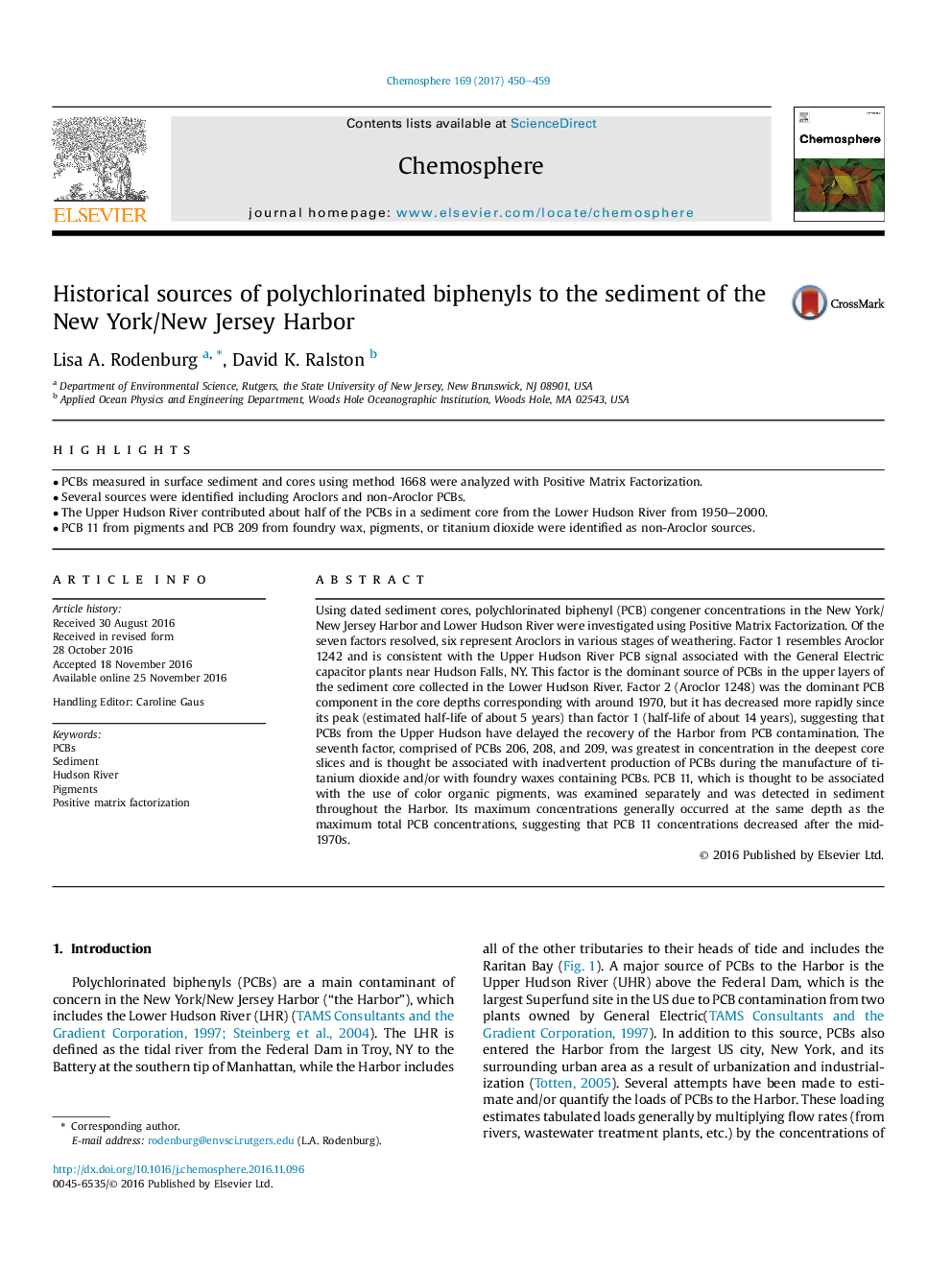| کد مقاله | کد نشریه | سال انتشار | مقاله انگلیسی | نسخه تمام متن |
|---|---|---|---|---|
| 5746990 | 1618802 | 2017 | 10 صفحه PDF | دانلود رایگان |
- PCBs measured in surface sediment and cores using method 1668 were analyzed with Positive Matrix Factorization.
- Several sources were identified including Aroclors and non-Aroclor PCBs.
- The Upper Hudson River contributed about half of the PCBs in a sediment core from the Lower Hudson River from 1950-2000.
- PCB 11 from pigments and PCB 209 from foundry wax, pigments, or titanium dioxide were identified as non-Aroclor sources.
Using dated sediment cores, polychlorinated biphenyl (PCB) congener concentrations in the New York/New Jersey Harbor and Lower Hudson River were investigated using Positive Matrix Factorization. Of the seven factors resolved, six represent Aroclors in various stages of weathering. Factor 1 resembles Aroclor 1242 and is consistent with the Upper Hudson River PCB signal associated with the General Electric capacitor plants near Hudson Falls, NY. This factor is the dominant source of PCBs in the upper layers of the sediment core collected in the Lower Hudson River. Factor 2 (Aroclor 1248) was the dominant PCB component in the core depths corresponding with around 1970, but it has decreased more rapidly since its peak (estimated half-life of about 5 years) than factor 1 (half-life of about 14 years), suggesting that PCBs from the Upper Hudson have delayed the recovery of the Harbor from PCB contamination. The seventh factor, comprised of PCBs 206, 208, and 209, was greatest in concentration in the deepest core slices and is thought be associated with inadvertent production of PCBs during the manufacture of titanium dioxide and/or with foundry waxes containing PCBs. PCB 11, which is thought to be associated with the use of color organic pigments, was examined separately and was detected in sediment throughout the Harbor. Its maximum concentrations generally occurred at the same depth as the maximum total PCB concentrations, suggesting that PCB 11 concentrations decreased after the mid-1970s.
Journal: Chemosphere - Volume 169, February 2017, Pages 450-459
